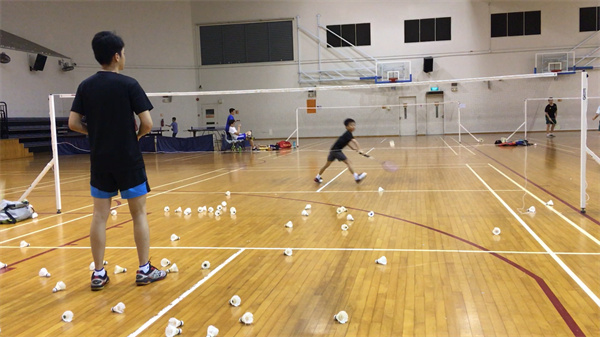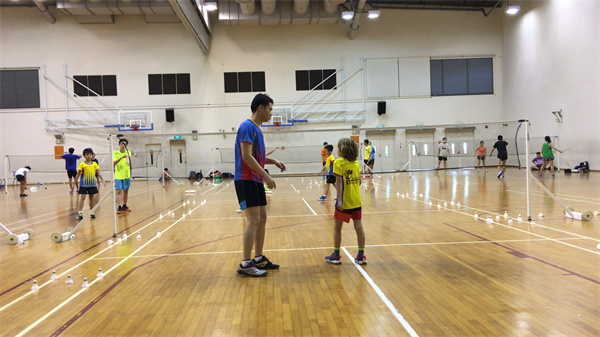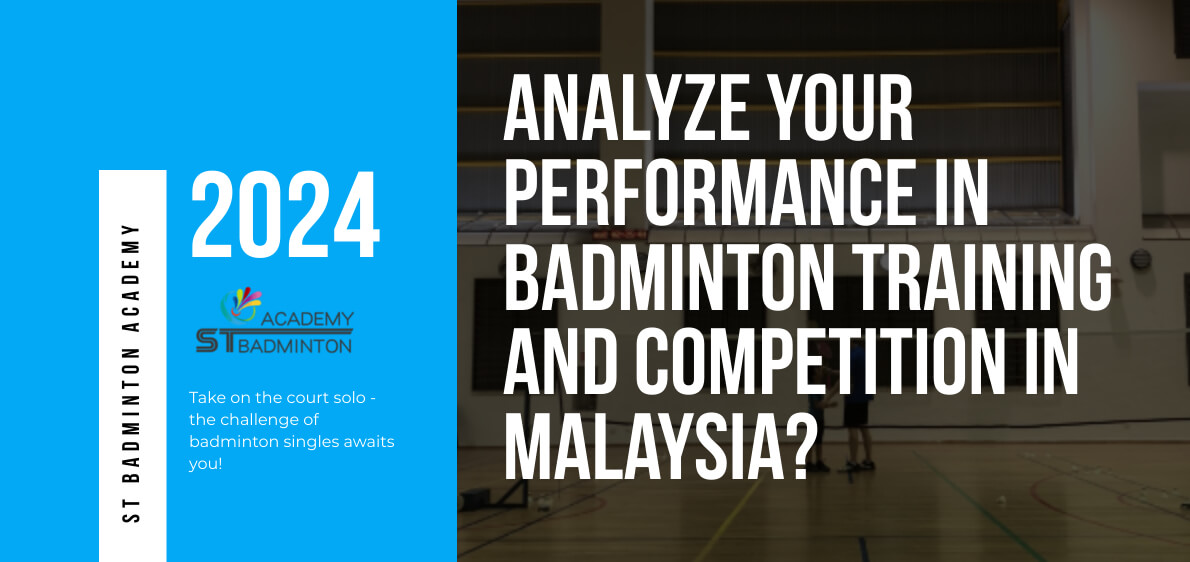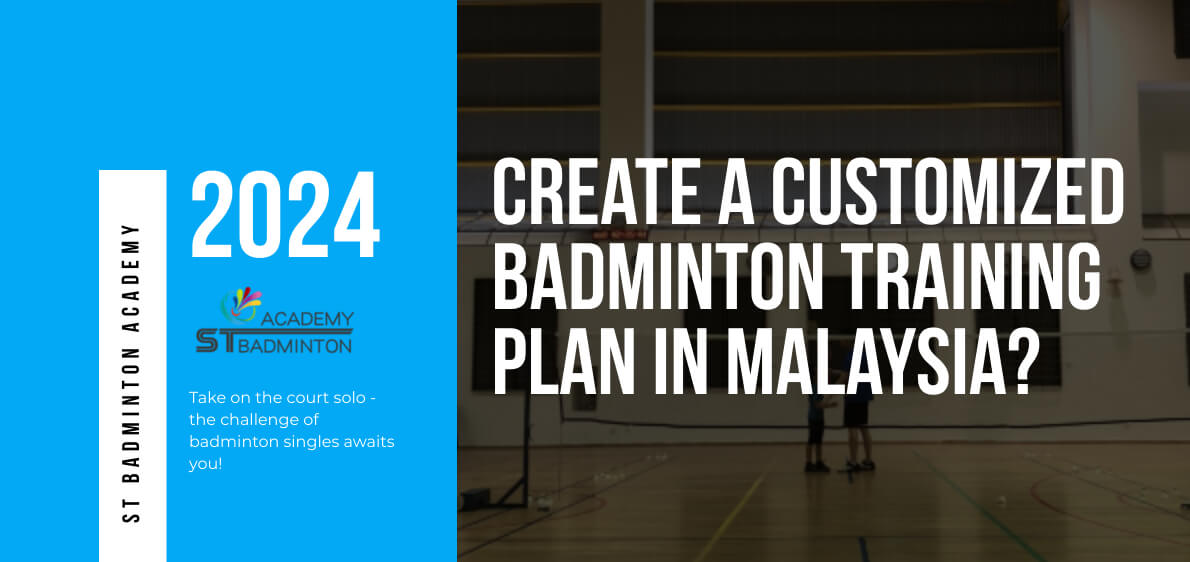5 Easy Badminton Training Exercises
Definition and purpose of training
What is the purpose of training? training for badminton can be essential to improving your game and reaching your full potential. To understand how to become the best badminton player you can be, it’s important to know the definition and purpose of badminton training.
The definition of training is an organized program designed to improve a player’s performance in the sport. It includes drills, exercises, technique work, match play simulations, recovery methods, nutrition guidance, and mental preparation.
The training serves an important purpose in developing the skills necessary for success on the court such as hand-eye coordination, speed, power, and agility. Furthermore, it helps build physical stamina as well as mental toughness which are key components in any competitive badminton.
Benefits of Badminton training
Whether you are a professional or recreational player, badminton training can offer a number of benefits.
The physical benefits of training are hard to deny. The game is a total body workout, involving physical activities such as running, jumping, swinging and reaching. Badminton works your legs, arms, abdominals, glutes, and shoulders. It is an excellent way to improve your cardiovascular health and keep your body in shape.
The mental benefits of training in badminton should not be overlooked either. The fast-paced nature of the game requires quick reactions and strategic thinking. The badminton game also requires players to develop the ability to focus and concentrate. This helps to improve mental clarity and focus, which can be beneficial in other aspects of life.
Badminton is also a great way to relieve stress. The adrenaline rush of playing a competitive game can help to distract you from any worries or anxieties you may be feeling. The social aspect of the game is also beneficial, as it provides a great way to meet new people and build relationships, especially in Malaysia and Singapore.
Badminton is a highly rewarding sport that can provide both physical and mental benefits. The physical benefits of playing badminton include improved cardiovascular health, increased muscle strength and tone, and improved coordination and balance. The mental benefits of badminton include improved concentration, focus, and strategic thinking. Badminton can also provide a great way to socialize with friends and family. If you’re looking for a fun and rewarding way to get in shape, joining badminton classes for kids in Malaysia is also an excellent choice.

The 5 Basic Badminton Foundation Exercises
1. Footwork
Common basic training is footwork drills. These drills will help players develop the speed, agility, and accuracy they need to move around the court. Here are some of the most common footwork drills used in training:
Jump Rope: Jumping rope is an excellent way to improve footwork in badminton because it works on quickness, agility, and coordination. It also helps to strengthen the ankles, tiptoes, and feet.
Ladder Drills: Ladder drills are a great way to develop agility, speed, and coordination. The ladder should be laid out on the court and players should move up and down the ladder as quickly as possible. Players should focus on quickness and accuracy with their footwork when doing ladder drills.
Shadowing: Shadowing is when a player follows another player around the court and mimics his or her footwork. This helps to develop accuracy and coordination in footwork, as well as helping players to learn how to move around the court quickly and accurately.
Hops: Hops are an excellent way to develop the muscles in the feet and lower legs. Players should start off by hopping on two feet and then move on to hopping on one foot. Hops should be done on the sidelines, in the center, and on the front and back lines of the court.
Plyometrics: Plyometrics are explosive exercises that are designed to improve power and speed. In badminton, plyometrics can help to improve footwork and agility by working on explosive movements.
These are some of the most common basic training for badminton used to improve footwork provided by our badminton coach. With proper training and exercise, players can develop the agility and speed they need to move around the court quickly and accurately. By combining these exercises with regular practice, players can become more agile and confident on the court.
2. Serve
Serve is well known as the first shot of the rally and it can set the tone for the entire game. Whether you are casual or professional, having an accurate serve can help you win matches. To help you improve your service, here are some basic training exercises.
Serve Drills: Once you have mastered the basics of footwork, you can start to practice your serve. Start by focusing on the basics of the services such as the grip, stance, and swing. Make sure you follow the correct technique and practice with a consistent tempo. You can then add power to push over the shuttle.
Serves with a Partner: Practicing your service with a partner is a great way to improve your service. You can focus on the technical aspects of your service and practice the different types of serves such as the forehand, and backhand serves, with long or short distances. You can also practice the accuracy of the position of your serve.
Serve with a Wall: Draw a line with a standard line height train with the wall. Incorporate these drills into your training routine and watch your serve improve. With practice and dedication, you will be able to hit accurate and consistent serves.
3. Forehand
The forehand is one of the most important shots in badminton and is essential for success. It’s important to practice your forehand in order to become an all-around better player.
When it comes to forehand badminton exercises, there are a few key exercises you can do to help improve your game. Here are some of the basic training you can do to help improve your forehand:
- Forehand clear: The forehand stroke is the most basic shot in badminton and is the foundation of a strong forehand game. This shot requires you to use the same strength to hit the shuttle just nice to the baseline of the court, but you should hit the shuttlecock with consistency. You can practice this shot easily by playing with your friend or training.
- Forehand Serves: The serve is an important part of badminton and is often the difference between winning and losing a game. As less mistakes on the serve, the more winning chance in casual games. When practicing your serves, you should focus on the angle and height of your shots, do not serve too high.
- Forehand slices drop: The forehand slice is an important shot that allows you to create spin and angle on your slice drop shots. This shot is best practiced by hitting the shuttlecock slice and creating spin to slow down the shuttle.
- Forehand Drives: The drive is a powerful shot that is used to put pressure on your opponent. When practicing your drives, you should focus on your wrist creating power and fast reaction.
By practicing these basic forehand training exercises, you can improve your forehand and become an all-around better player.
4. Backhand
The backhand is a key element of your badminton game. It allows you to hit the shuttlecock with both power and accuracy especially single. To practice your backhand, you need to focus on both the form and technique of your shot. Here are some basic backhand exercises that can help you improve your game.
- With Wall: Play backhand grip with the wall helps you develop your consistency and faster reaction. Stand about six feet away from a wall and hit the shuttlecock against the wall. Make sure to hit the shuttlecock with your backhand and focus on your form and technique as you hit the shuttlecock.
- Shadow Drills: Shadow drills help you practice your backhand training to increase muscle memory without a partner. Stand in a good badminton position and move your arm and wrist, swing the racket as if you were hitting the shuttlecock using your backhand. Focus on your form and technique as you move your arm.
- Partner Drills: Partner drills can help you work on your backhand with another player. Ask your partner hit the shuttle on your backhand to train.
These basic backhand training will help improve your badminton game. As most people are weak on the backhand, not sure how to generate power. Make sure to practice your backhand regularly and you’ll soon see the results if you are using the right way.
5. Smashing
Everyone like smash involves hitting the shuttlecock with great force and speed, so it’s important to practice this skill. The best way can improve your smashing technique is to attack and recover. Sometimes a lot of players can attack but don’t know how to defend at the same time.
So This drill is designed to help you practice attacking and defending. If you have a coach, request them to feed you shuttles and practice attacking them with smashes and defense multiple shuttle drills. As soon as you hit the shuttle, quickly recover and continue the next shot.

Essential Tips for Before Start Training
Here are some essential tips before training that will help you prevent injury for most of your time on the court.
Proper warm-up and stretching
Warming up and stretching before playing badminton can help prevent injuries and improve your performance. It also helps you to get into the right frame of mind and to focus on the task at hand. So, if you’re serious about improving your badminton game, make sure to warm up and stretch properly before your game or training session.
The first step in warming up is to do some light cardio. This can be anything from walking, jogging, cycling, or even skipping. The aim is to get the heart rate up and the muscles warm.
Once you’re warm and your heart rate is elevated, it’s time to move on to some dynamic stretching. Dynamic stretching is a great way to warm up the muscles before playing badminton. This type of stretching involves moving your muscles through their full range of motion and can help to increase flexibility.
After you’ve done your dynamic stretches, it’s time to move onto the more specific stretches that will target the muscles you use during badminton. These stretches can help you to improve your power, speed and agility. Examples of these stretches include hip flexor stretches, shoulder and arm stretches, calf stretches and hip rotations.
Finally, it’s important to cool down after your training session. This is important to help prevent muscle soreness and fatigue. This can be done by doing some light jogging or walking and some static stretches. Examples of static stretches include shoulder stretches, hip rotations, quadriceps stretches, and calf stretches.
Setting realistic goals
To be honest, you need to make sure that you are setting realistic goals for your badminton if you really wish to keep improving.
The first step to setting realistic goals is to assess your current level of skill. Do you have the basic skills required in badminton or learned from any badminton coach before? Are you comfortable with your current skill and foundation now? Are you able to keep up with the intensity of the game? Once you have assessed your current skill level, you can then decide on what areas you need to work on and can set realistic goals for your badminton training.
The next step is to choose a badminton coach like ST Badminton Academy or a sparring partner who can help you achieve your goals. Reputable coaches are available in Malaysia who can provide guidance to help you reach your goals. They will assess your skills and provide you with advice on how to improve them. This is important as it will help you to stay focused and motivated as you progress through your training.
It is also important to set specific goals when it comes to joining any badminton classes in Malaysia. These goals should be achievable, yet challenging. Set yourself a target to achieve each week or month, such as improving your footwork or increasing your stamina. By setting realistic goals before joining any classes, you will be able to track your progress and stay motivated.
Finally, make sure that you rest and recover after each session. Badminton is a high-intensity sport and you need to give your body time to recuperate after each session. According to ST Badminton Academy, make sure to take breaks between sessions and also to get enough sleep. Eating a healthy diet is also important for your body to stay fit and healthy for your training.

Utilizing Proper Equipment for Badminton
You need to have the right equipment for badminton. Some people buy expensive rackets but not suitable for them, as they might be too heavy, balancing, or the shaft too stiff. Choosing the right badminton racquets is important for success and you should choose the one that best suits your playing style.
The racquet should be lightweight and provide the right balance if you are at a beginner to intermediate level. With the right equipment and technique, you can reach your full potential and achieve your badminton goals.
Recap of 5 Basic Badminton Training Exercises
We have looked at and explained five basic badminton skills training or more than that for you to have more understanding of it.
By doing all these basic badminton skills training regularly, you will be able to improve your badminton game. Not only will you be able to hit the shuttlecock with more accuracy, but you will also be able to move faster and become more consistent with your shots lifting up your level.

Back to the training home page.




